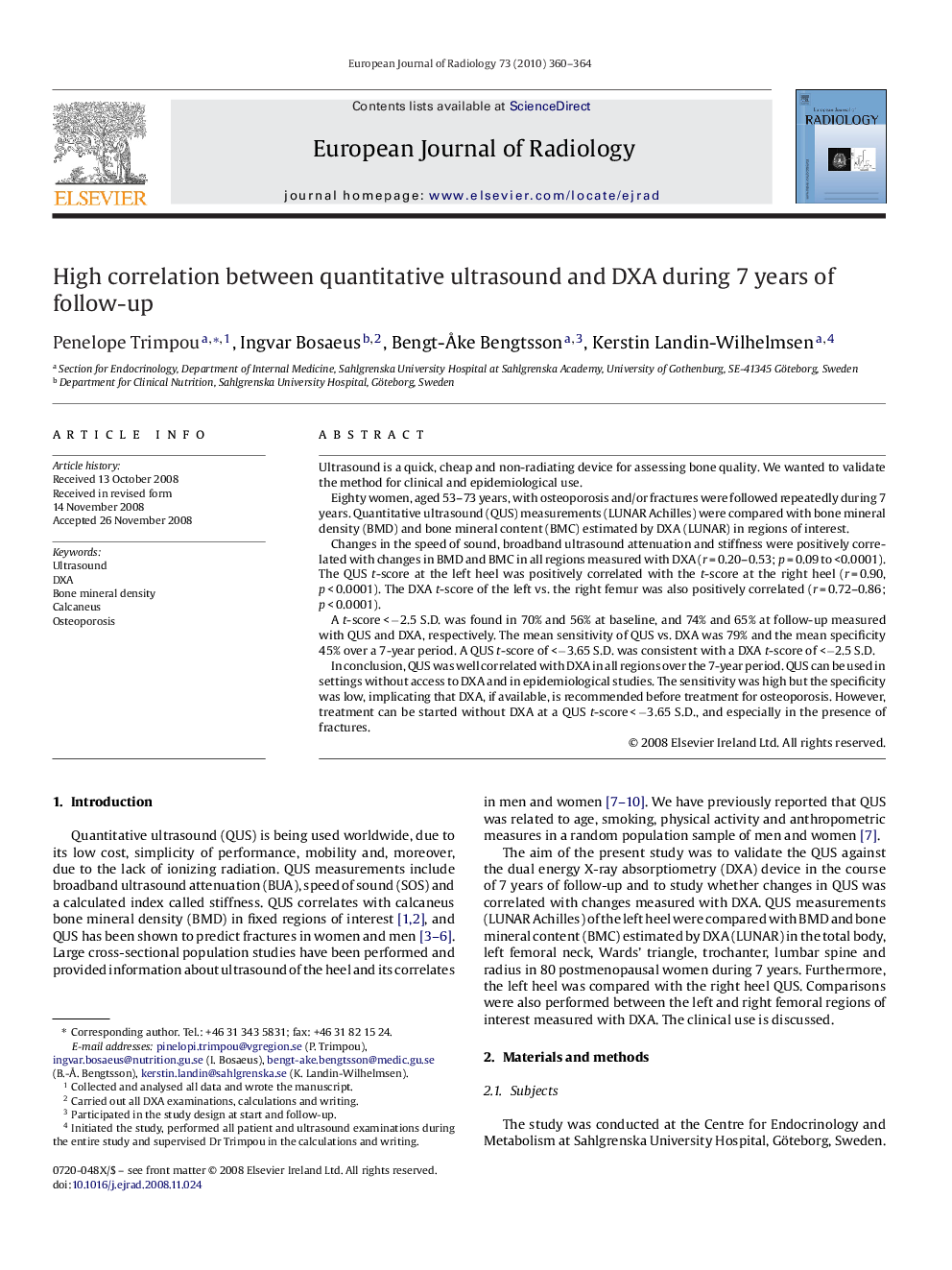| Article ID | Journal | Published Year | Pages | File Type |
|---|---|---|---|---|
| 4226556 | European Journal of Radiology | 2010 | 5 Pages |
Ultrasound is a quick, cheap and non-radiating device for assessing bone quality. We wanted to validate the method for clinical and epidemiological use.Eighty women, aged 53–73 years, with osteoporosis and/or fractures were followed repeatedly during 7 years. Quantitative ultrasound (QUS) measurements (LUNAR Achilles) were compared with bone mineral density (BMD) and bone mineral content (BMC) estimated by DXA (LUNAR) in regions of interest.Changes in the speed of sound, broadband ultrasound attenuation and stiffness were positively correlated with changes in BMD and BMC in all regions measured with DXA (r = 0.20–0.53; p = 0.09 to <0.0001). The QUS t-score at the left heel was positively correlated with the t-score at the right heel (r = 0.90, p < 0.0001). The DXA t-score of the left vs. the right femur was also positively correlated (r = 0.72–0.86; p < 0.0001).A t-score < −2.5 S.D. was found in 70% and 56% at baseline, and 74% and 65% at follow-up measured with QUS and DXA, respectively. The mean sensitivity of QUS vs. DXA was 79% and the mean specificity 45% over a 7-year period. A QUS t-score of <−3.65 S.D. was consistent with a DXA t-score of <−2.5 S.D.In conclusion, QUS was well correlated with DXA in all regions over the 7-year period. QUS can be used in settings without access to DXA and in epidemiological studies. The sensitivity was high but the specificity was low, implicating that DXA, if available, is recommended before treatment for osteoporosis. However, treatment can be started without DXA at a QUS t-score < −3.65 S.D., and especially in the presence of fractures.
